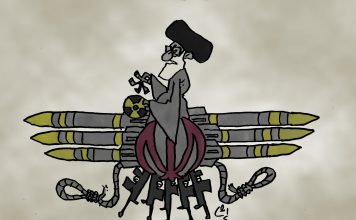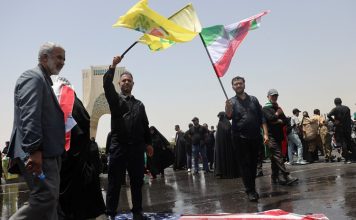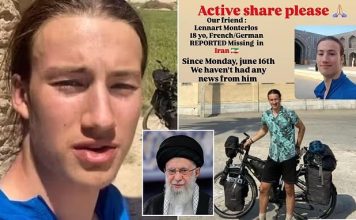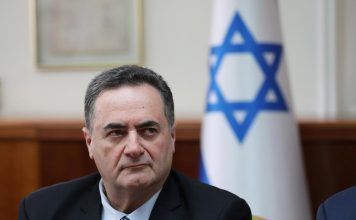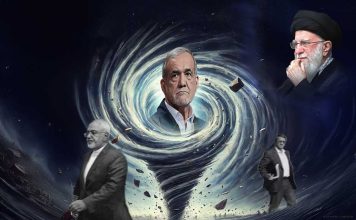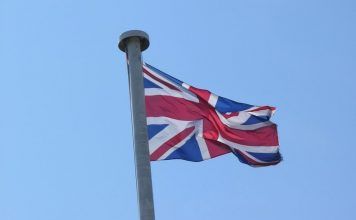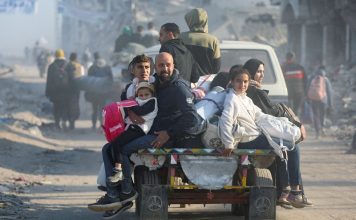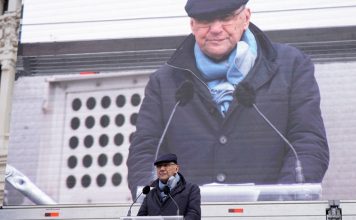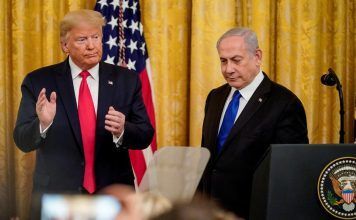The Islamic Republic’s treatment of women was criticized during an Oct. 12 United Nations committee meeting in Geneva by several UN experts discussing violence against women and women’s rights defenders around the world.
Violence against protesters in Iran campaigning for gender equality has reached “an annual high-water mark of police heavy-handedness,” Dr. Jill Edwards, the UN Special Rapporteur on Torture and Other Cruel, Inhuman or Degrading Treatment or Punishment said at the meeting.
“The rise in torture and intimidation to quash political opposition and dissent cannot be ignored,” Dr. Edwards, who is the UN’s first female rapporteur on torture, added.
Iran faced an international outcry after the death in September 2022 of 22-year-old Mahsa Jina Amini while in police custody. Amini had been arrested for allegedly failing to follow the Islamic Republic’s mandatory hijab law. Evidence and testimonies provided to the UN established that Amini had been violently beaten and died as a result of torture and ill-treatment by Iran’s morality police.
Amini’s death sparked nationwide anti-government protests, which were met with lethal force by Iran’s security officials. The crackdown resulted in the deaths of more than 500 people, including at least 68 children and 48 women.
The Iranian government’s ongoing repression of women and girls led the UN on Sept. 1 to call the country’s restrictive policies and laws a form of gender apartheid. Global outrage at Amini’s death and the brutal crackdowns on protesters which followed resulted in Iran being removed in December from the Commission on the Status of Women, the UN’s top women’s rights body.
During the Oct. 12 meeting, additional concerns about Iran’s government jailing women activists in Iran were raised by Mary Lawlor, the Special Rapporteur on the situation of human rights defenders.
Rejecting the rapporteurs’ comments, Iran’s UN delegate at the meeting who was not named during the video coverage of the event said Tehran was “committed to promoting and protecting the human rights of all, particularly women.”
“Iran has always provided full support to free assembly, including by women,” she said.
The experts also discussed UN Secretary-General António Guterres’ latest Iran human rights report, which provided an update on the situation in Iran following Amini’s death.
Guterres raised concerns about Iran’s failure to conduct independent and transparent investigations into Amini’s treatment, and allegations of human rights violations against protesters. Guterres also expressed concern about the increasingly harsh laws against women being implemented to enforce the mandatory hijab.
The report, which was prepared by the Special Rapporteur on the situation of human rights in the Islamic Republic of Iran, Javaid Rehman on Aug. 24 and published on Oct. 12, said the “continuing violence against women and girls has been alarming, including cases of deliberate killings, as well as sexual and physical violence,” and that human rights had deteriorated in Iran “especially with respect to women and children.”
Several recommendations were contained in the report such as repealing all laws and regulations imposing and enforcing the mandatory dress code, and ending all forms of violence against women and girls, including the harassment of girls and women protesters.
The impact of harassment and repression among women and female protesters in Iran has begun to be documented by US-based nonprofit organization Mental Health Beyond Borders (MHBB).
Amnesty International Reports on Iran’s Crackdown to Enforce Hijab, Including Vehicle Confiscation
Dr. Mojgan Hakimi, the founder of Mental Health Beyond Borders and the Los Angeles-based nonprofit organization Persian American Women’s Conference, told Kayhan Life that the number of attempted suicides among women who had been detained in Iran was unusually high. Of the 35 women receiving therapy at MHBB, 80 percent had tried to die by suicide or had experienced suicidal ideation.
Dr. Hakimi said some of the patients had reported getting medical checkups after being released from prison and were told by their doctors that traces of potassium aspartate had been detected.
“There is an emerging belief that various intakes of derivatives such as potassium aspartate were given to these prisoners because some of these can, in various doses, create suicidal ideation,” Dr. Hakimi said. “Something is happening during incarceration that is causing them to attempt suicide within a week or two weeks of their release.”
A similar report published by Radio Farda on Jan. 16 claimed that prison officials in Iran had been using drugs to control detainees. Iranian activist Leila Hosseinzadeh who was released from Shiraz’s Adelabad prison wrote a post on X on Jan. 15 which said that after a fight between two inmates, “a pill was placed into the mouth of one of them, and they were unable to speak properly for a few days.”
Suicide rates in Iran have increased by 40 percent in the last decade, according to official government data published by the Etemad newspaper. The figures show that women had higher suicide rates in Iran’s western provinces due to “family conflicts” and “gender discrimination.”
“The situation with Mahsa Jina Amini is enhancing what is happening to Iranian women, and the impact of political oppression on women has been mind-blowing,” said Dr. Hakimi, who is also the chair for the department of psychology at Touro University in Los Angeles.
MHBB provides counseling for men and women inside Iran who are feeling anxious or depressed. Dr. Hakimi said the project had not received any funding and the 10 clinicians at MHBB, who are all licensed and fluent in Farsi, provided their services as unpaid volunteers. The women currently being treated are aged between 19 years-old and 55 years-old.
Hakimi said there was a direct correlation between levels of oppression that existed in a society and instances of depression and anxiety among those communities.
“Since they were born these girls have not been allowed to have a sense of self and self expression, whether it’s in the way they want to dress, whether it’s in the sports they want to engage in, or follow,” Hakimi said. “ So one of the reasons that they go in the street to protest is that it is the only way that they are able to express themselves. They are able to say, ‘here I am, and this is what I think.’”
The plight of women in Iran has been acknowledged in recent months by prestigious awards bodies.
Imprisoned human rights activist Narges Mohammadi was awarded the 2023 Nobel Peace Prize for drawing attention to the oppression of women in Iran, and her campaigning to promote human rights in the country.
Amini won the European Union’s 2023 Sakharov Prize on Oct. 19, which honors human rights defenders, while actress and activist Nazanin Boniadi was awarded Australia’s 2023 Sydney Peace Prize on June 8, for her “commitment to advancing women’s rights in Iran.”



